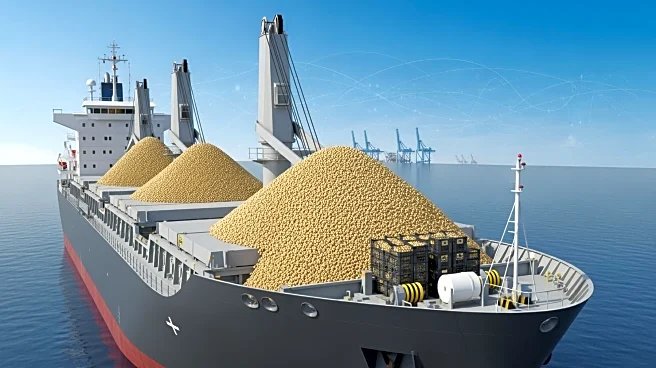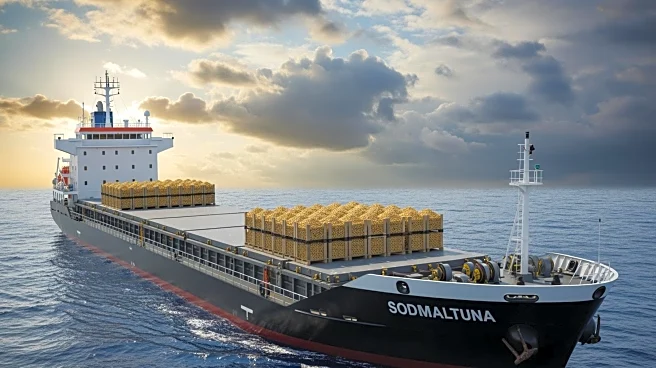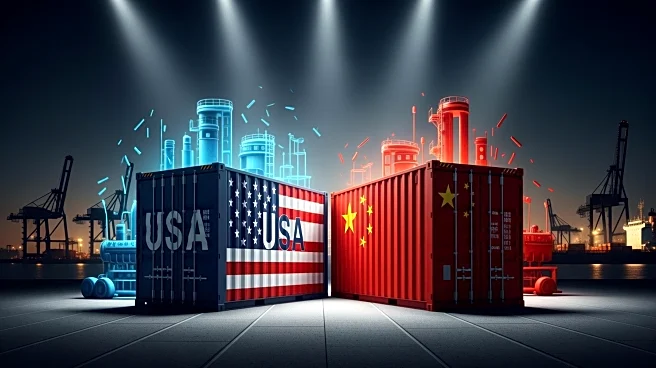What's Happening?
A new trade agreement between the United States and China is set to significantly impact the dry bulk market and the economies of both nations. China has committed to resume imports of US soya beans, agreeing
to purchase 12 million tonnes during the remainder of 2025 and 25 million tonnes annually over the next three years. This agreement also includes reduced tariffs on US grains and meat, and the resumption of US sorghum imports. In return, the US will lower tariffs on Chinese goods by 10 percentage points. Additionally, both countries have agreed to suspend port fees on each other's ships for one year. This development comes as US soya bean shipments to China have dropped 65% year-on-year, although overall Chinese imports have increased by 5% during the same period.
Why It's Important?
The trade agreement is poised to provide relief to US soya bean exporters who have faced significant declines in shipments to China. The resumption of these exports is expected to boost the US agricultural sector and positively influence the dry bulk shipping market, particularly benefiting the panamax segment, which transports the majority of soya bean cargoes to China. The agreement also signals a thaw in trade relations between the two countries, potentially stabilizing global trade dynamics. However, the long-term demand for US soya beans may be tempered by China's preference for South American cargoes due to lower prices, and potential Chinese government efforts to reduce soya bean imports.
What's Next?
In the coming months, China is expected to increase its inventory of US soya beans, driven by favorable pricing and the upcoming South American harvest. This could lead to a shift in global soya bean trade patterns, with US shipments potentially bypassing the Panama Canal for longer routes via the Cape of Good Hope. The medium-term outlook suggests continued growth in China's soya bean demand, supported by rising meat production. However, risks remain, including potential Chinese policy changes aimed at reducing imports and addressing overcapacity in pork production.
Beyond the Headlines
The trade agreement may have broader implications for global agricultural trade, influencing pricing and supply chain dynamics. The shift in trade routes could impact shipping logistics and costs, while the suspension of port fees may encourage increased maritime activity between the two nations. Additionally, the agreement could serve as a model for future trade negotiations, emphasizing mutual tariff reductions and collaborative economic strategies.











